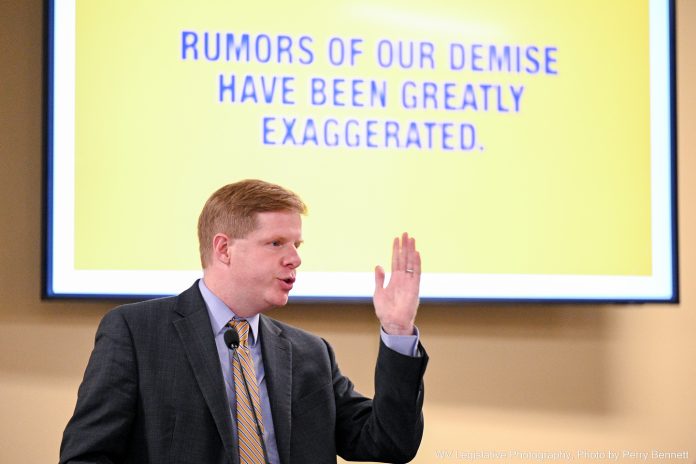West Virginia University Vice President of Strategic Initiatives, Rob Alsop, addressed the Joint Committee on Finance regarding the university’s planned restructuring during September interim meetings Monday morning.
Alsop made it clear to the committee that President Gordon Gee’s job is secure, despite an overwhelming no confidence vote from faculty last week. Gee, previously scheduled to address the committee, was not in attendance today, citing a personal matter.
Due to enrollment decline, WVU faces an estimated budget shortfall of $45 million, which it is planning to address via a combination of tuition increases, the use of financial reserves and faculty and program cuts.
The university completed an appeals process last week for announced program changes, altering the programs and number of faculty to be cut. Alsop characterized the cuts as a fraction of the university’s overall academic offerings, in line with a higher education funding formula established by the Legislature.
Some lawmakers expressed concern about students’ ability to receive a well-rounded education at WVU post cuts, as well as the university’s ability to keep its status as an R1 research university.
Alsop assured committee members that the majority of the planned cuts are to programs with relatively low enrollment and that the R1 designation will not be impacted in any meaningful way.
The WVU Board of Governors, whose members are appointed by the Governor and confirmed by the state Senate, will meet this week to vote on the proposed cuts and changes. They released a statement last week supporting Gee and the university’s planned restructuring.
Alsop noted that WVU would obviously accept financial help from the Legislature but reiterated the administration’s position that an influx of one-time money for this year would only delay the adverse effects of clear structural issues at the university.
“If I thought there was a realistic opportunity to get another $50 million or $60 million in base funding every year for WVU, we would have been down here,” Alsop said. “But one-time funding is not going to fix the enrollment challenges long-term.”

